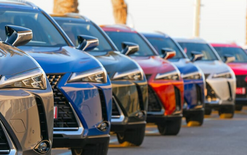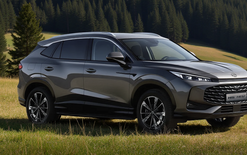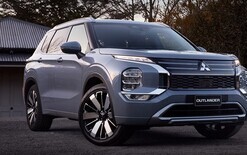Clean-car weights need tackling

Problems with how vehicles are assessed by their weight under the clean car standard (CCS) need to be tackled by the next government.
That’s the view of Greig Epps, chief executive of the Imported Motor Vehicle Industry Association (VIA).
It comes against the backdrop of the National Party proposing to review the CCS and scrap the clean car discount (CCD) if it’s voted into power at next month’s general election.
During a webinar on September 26, Epps said that while the CCD had been useful for consumers, it had created issues for retailers. He stressed that when it comes to the CCS, it’s important to look at the weight-adjustment issues so small models aren’t penalised in the same way large vehicles are.
“The small cars that predominantly come through our [used imports] channels are efficient, and can help us to transition and reduce our carbon footprint,” said Epps. “We need to ensure the CCS works for what it’s trying to achieve.” And that’s by penalising large vehicles and supporting smaller, efficient cars.
When it comes to changing legislation in the immediate future, Epps would like to see what’s been implemented to date with the clean-car policies canned and better ways to incentivise people to make good choices introduced.
“Regulation should be about creating a level playing field. Standards need to be set to ensure vehicles are safe and clean enough, and should ensure competition.”
It has been predicted that, by 2030, around 36 per cent of cars sold will be electrified. Epps pointed out that means 64 per cent aren’t and the used-imports sector needs to be in that space.
An issue facing importers of used cars in the short term is that the range of electrified models available might diminish until a wider variety is on offer.
“I believe we can be a part of the transition to a low-carbon economy. Affordable used imports will play a major role in this journey.
“It is a transition, not a switch and flip. In the next 10 years, we need to source these vehicles progressively to bring the carbon footprint of the fleet down, and offer buyers better safety and more technology.”
As for hydrogen, Epps said it has a role in heavier transport – trucks, trains, ships and aviation – but for light vehicles it’s going to be a lot more difficult.
He pointed out that more infrastructure and charging facilities still needs to be rolled out for BEVs, and hydrogen could be a “distraction in that space” when it comes to the light-vehicle fleet.
Looking to the future
As for where VIA and the bigger picture will be in say 10 years’ time, it will be “massively important” where we are all sitting in achieving climate-change goals that the country has set itself. It’s a transition from one state and another state through steps, and not just flip and switch.
Epps added he was still working his way through the book, From the Rising Sun to the Long White Cloud – the history of used-car importing to New Zealand. It was published by 4 Media Ltd, which owns Autofile, in 2014 to commemorate the 25th anniversary of the IMVIA.
“When the market opened to more vehicles from overseas, people started getting things like electric windows and better stereos in their cars,” he remarked.
“Now it’s still about ensuring Kiwis have access to affordable and better cars – and vehicles that are also sustainable. New Zealand is not a high-income country and many people do not earn high wages.”
For them, he noted, it’s about ensuring they can access used vehicles and that they get can the best ones they can from the used-imports channel.
Another challenge will be shipping. One issue that could affect this is climate change, and its impact on shipping lanes, sea-level rises impacting on ports and different conditions at sea – all of which might impact how products are transported here.
Modes of transport
Epps doesn’t see modal shift as having a great impact on New Zealand’s car industry and ownership levels of vehicles.
In the future, there might be more transport choices for people who travel from one place to another. But short distances are normally involved in that, such as going to work and the shops. Average commuting distances in this country come in at about 20km, while Kiwis complete a large number of trips of around 2km.
“There will still be a need for a vehicle to do other things,” said Epps. “A family of five will still need to take their car on their holidays, say to Mount Maunganui from Taupo – and to get everything they need in it. For rugby-team runs at weekends, people will still need their vehicles.”
He anticipates it will take some 10 years to get modal shift into place in New Zealand, so private vehicles will not become obsolete and will still be a necessity.
As for changes made to vocational education, Epps said a return to focusing on what industry needs in terms of skills was required. He added he was concerned about some issues with workforce development councils, but there was now better recognition of micro credentials. That said, the funding structure around qualifications hadn’t been addressed.
As for politicians talking about making more changes and “creating merry hell again”, time was now needed for new structures and changes already made to set in place.
“It all needs to bed in. People messing around with it does nothing for businesses needing people to get trained. Merging 16 organisations into one – there were always going to be problems doing that. For people in these organisations, there has been a lot of change and uncertainty. Let them get their jobs done.”
Looking back
Epps quipped that his biggest accomplishment to date was getting his wife to agree to marry him…
However, when it comes to industry issues, he recalled that during his first few years at the Motor Trade Association (MTA) that vehicle safety – and getting people to focus on the warrant of fitness (WOF) and maintenance – was on the agenda.
In 2014, when he joined the MTA, “strategies contained very little about safety and we made a big push with officials on the Road To Zero, which included a whole chapter on vehicle safety and maintenance. But the disappointment was that not really being pushed through”.
A review of the vehicle-inspection requirements manual, the WOF process, and a conversation around safety and ratings areas that Epps would like to see picked up on again.
From childhood to now
Epps mainly grew up in south Auckland. He attended De La Salle College in Mangere East before going onto Auckland Boys Grammar, Epsom. At university, he read arts and law, although he didn’t go down the private-practice path.
Instead, he joined Vector’s in-house legal team, and worked on board and governance issues before heading overseas in 2000. He joined a company in Hong King that built power stations before spending five years in Canada with his girlfriend, who became his wife and later mother to their nine-year-old son.
They returned to New Zealand in 2007, and since then work – his wife is also a lawyer by profession – has seen them travel up the country from Dunedin, to Christchurch and now Wellington.
Most people in the automotive industry will know Epps from his work at the MTA. He spent eight years there as its advocacy manager after joining it in 2014. His job included government relations and working closely with the MTA’s sector managers.
Epps then opted for a fresh challenge. He has joined VIA after working for the Insurance Council of NZ for a year – another industry facing a massive amount of regulation, government policies and legislation being put into place. Epps then saw VIA’s advert for a chief executive to replace David Vinsen. “Several people encouraged me to put myself forward and, happily, VIA agreed I was the right person to lead the team”.





